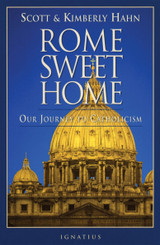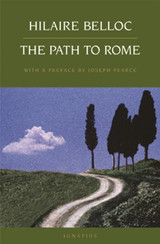Product Overview
Can you be a Jewish Catholic? At first glance, the idea could seem scandalous. Catholics affirm that Jesus is the Messiah; Jews do not. Jews hold that the Torah’s precepts should be diligently kept; Catholic Christians hold that Christ has fulfilled the law. Can they really be reconciled?
Yet Jesus, a Jew, tells us that “salvation comes from the Jews” (Jn 4:22). Pope Pius XI once remarked, “Spiritually, we [Catholics] are all Semites.” In a sense, Christians are Jews by adoption, as Saint Paul writes to the Romans. Since the days of Peter and Paul, the Church has struggled to understand her close yet complex relationship with the people from whom she came, at times stressing stark differences, at times treasuring their close brotherhood.
This essential collection by Professors Angela Costley and Gavin D’Costa examines the question of Jewish–Catholic relations from every angle. With contributions from some of the Church’s greatest theological minds—Scott Hahn, Brant Pitre, Bruce Marshall, Roy Schoeman, Robert Fastiggi, Lawrence Feingold, Fr. Antoine Levy, and Fr. David Neuhaus—From Sinai to Rome probes the possibility of Hebrew Catholicism, which nurtures its Old Covenant roots from within the Church.
This book refuses to shy away from historical knots in Catholic and Jewish relations, but seeks to understand them thoroughly, in the context of the sacred Catholic tradition. This timely volume gives intellectual grounds for the hope that Jews might find their true homeland in Christ, with the holy Church that he himself founded.
KEY POINTS
- A rigorous study of the rich relationship between Judaism and Catholicism
- An in-depth account of the Church’s Old Testament roots
- An honest, focused summary of the Church’s complex history with Jewish practice
- A robust exploration of a possible Hebrew liturgical rite within the Church
Editorial Reviews
“An intriguing and life-changing collection of essays on the relationship of the Catholic faith to the historic people of Israel. A monumental contribution!”
—John Bergsma, PhD, Professor of theology, Franciscan University of Steubenville
“The Church emerged from the Jewish people in the first century, but in our own times Jews who belong to the Church are celebrating their Jewish identity. This is a fascinating exploration of what this means for both Catholics and Jews.”
—Cardinal Pierbattista Pizzaballa, Latin patriarch of Jerusalem
“A vital presentation of the range of possibilities for the future of Hebrew Catholics. This book will be a touchstone for the development of Hebrew Catholic identity and practice for years to come.”
—Matthew Wiseman, Author, The Two Jerusalems: My Conversion from the Messianic Movement to the Catholic Church
“I rejoice in the publication of this book. We can all look forward to meditating on the thoughts of these theologians and clergy who have taken up the great themes concerning God, his enduring covenant with the People Israel, and his new covenant with all peoples.”
—David Moss, President, Association of Hebrew Catholics
“Thrilling insights from top leaders of Hebrew Catholics on how a believer can be simultaneously Jewish and Catholic in theory and in practice and how Old Testament concepts greatly influenced Catholic belief. This book will facilitate Catholic-Jewish dialogue, bring about conversions, and promote greater unity.”
—Ronda Chervin, PhD, Professor of philosophy, Catholic author, and Hebrew Catholic
“Does recent Catholic teaching about the enduring election of the Jewish people imply that Jews who become Catholics should maintain their Jewish identity? How can the Church consider her nature as a body that brings together Jews and gentiles (see Eph 2; Rom 11)? This thought-provoking book confronts the Church with these two fundamental theological questions on the very essence of the Church.”
—Etienne Vetö, Auxiliary bishop of Reims; referent bishop for Relations with Judaism
“It is rare to find an edited collection that can be considered a theological milestone, but this book merits such an accolade. Drawing on Scripture, Tradition, and magisterial teaching, these rich essays document the Church’s emerging awareness of the profound implications of her own identity as a community of Jews and gentiles. A fascinating read, and much more: a sign of a new stage in the Church’s self-understanding.”
—Mark S. Kinzer, Author, Searching Her Own Mystery: “Nostra Aetate”, the Jewish People, and the Identity of the Church







